It’s common for an NFT collection to have a fixed price per NFT during the project's launch. Eventually, however, non-fungible tokens (NFTs) from the same collection could be priced differently.
This price difference between NFTs under the same banner is determined by the rarity of each NFT.
This article explains what NFT rarity is, how it is calculated, and the best tools you can use to find an NFT’s rarity.
What is NFT rarity?
NFT rarity is a numerical score that shows how scarce an NFT is compared to other NFTs within the same collection. The rarity score of an NFT reflects how unique the NFT’s traits are. The more unique traits an NFT has, the higher its rarity score is.
To understand this better, let’s start by understanding NFT traits.
Traits within an NFT collection define the design characteristics of each individual NFT. NFT designers often design many traits alongside one or more foundational elements.
They then use algorithmic permutation and combination to place these traits over the foundational element to generate the whole NFT collection.
This means that the traits assigned to each NFT are automated and random.
For example, the popular NFT collection CryptoPunks has 87 individual traits and five Punk types (the base element), all with different levels of rarity. The most common Punk types are Male and Female. The rarer types are Zombie, Ape, and Alien, which only make 88, 24, and 9 NFTs, respectively, in the 10k collection.
Each Punks can have a minimum of 0 traits and a maximum of 7 traits. A Punk’s rarity is calculated by collectively assessing three factors:
- The rarity of the Punk type
- The rarity of all its traits
- The number of Punks with an equal number of traits.
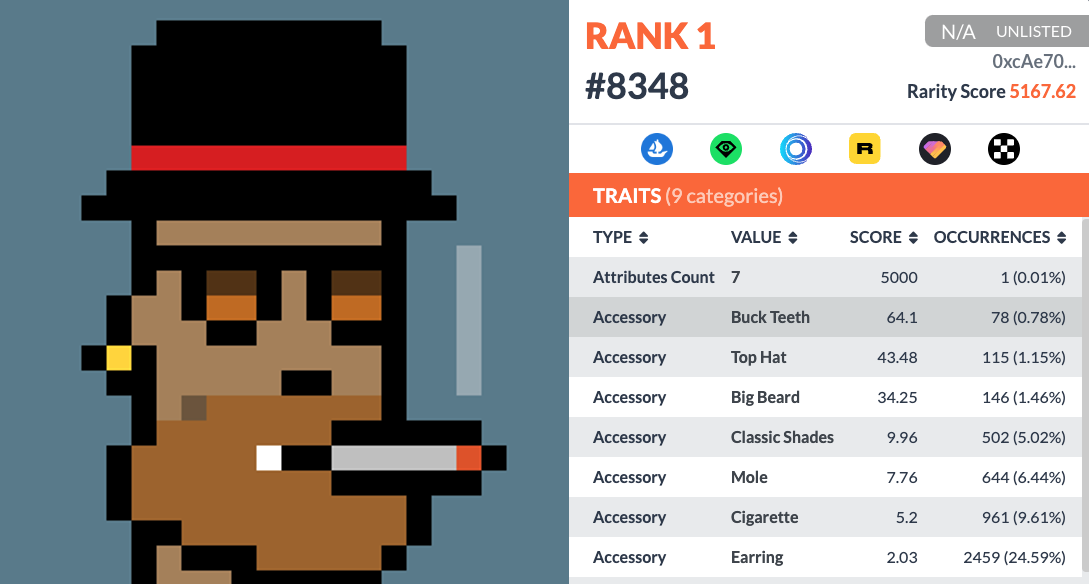
There are only eight Punks out of 10,000 that have zero traits. This makes them some of the rarest in the Punk collection.
Within any given collection of thousands of NFTs, it can be nearly impossible to manually identify the precise rarity of each NFT.
This is where NFT rarity scores come in. They help rank NFTs within a collection based on their scarcity relative to each other.
Knowing the rarity of an NFT within its collection helps prospective buyers assess the value of an NFT. It also helps NFT owners set a rate for their NFTs.
NFT rarity calculation methods
There are four common ways to calculate NFT rarity scores:
- Trait NFT rarity
- Average trait rarity
- Statistical rarity
- Rarity score
Some methods consider only the rarest trait while others take an average of multiple traits to arrive at the final score. Each method yields different results and has its pros and cons.
To clearly understand the methodologies, let’s suppose there are three NFTs with four traits each.
The below table shows the NFT IDs of the three NFTs and the rarity of each of their traits.

Note: The percentage rarity is the percent of the NFTs in this NFT collection that has the listed traits.
Now, let’s study the NFT rarity calculation methods individually and see how they arrive at different rarity scores.
1. Trait NFT rarity
The trait NFT rarity method considers only the rarest trait of an NFT while ignoring the other less rare traits. It compares the rarest trait of an NFT with the other NFTs in the collection and ranks them accordingly.
Here are the rarest traits of each NFT from the above table:
- #0001 = 5% (Trait 3)
- #0002 = 1% (Trait 2)
- #0003 = 1.5% (Trait 3)
Using this method, NFT #0002 is the rarest of all three because one of its traits has the lowest occurrence.
A downside to this method is it neglects all traits except the rarest one.
2. Average trait rarity
The average trait rarity method calculates an NFT’s rarity based on the average rarity of all the traits. It does so using the following formula:
Average trait rarity = Sum of rarity of all traits / number of traits
Using this formula, here are the rarity scores for the three NFTs:
#0001 = (12.5+8+5+2.5)/4 = 7
#0002 = (10+1+8+2)/4 = 5.25
#0003 = (5+12.5+1.5+10)/4 = 7.25
NFT #0002 is the rarest, followed by #0001 and #0003.
Although this method considers all the attributes of an NFT, its downside is that it minimizes the importance of highly rare traits.
3. Statistical rarity
The statistical rarity method determines the NFT rarity score by calculating the product of the weights of all rarities of an NFT. Similar to the average rarity model, this model also uses the overall rarity to rank the NFTs but takes a statistical approach to arrive at the results.
To simplify this, here’s the formula we use for statistical rarity:
Statistical rarity = rarity of Trait 1 * rarity of Trait 2 * …rarity of trait n
For instance, if an NFT has two traits - 10% and 20% - the statistical rarity of that NFT would be:
Statistical Rarity = 10% * 20% or 0.1 * 0.2 = 2% or 0.02
Similarly, for our three NFTs, here’s how the rarities would look:
#0001 = 12.5% * 8% * 5% * 2.5 = 0.0000125
#2345 = 10% * 1% * 8% * 2% = 0.0000016
#3456 = 5% * 12.5% * 1.5% * 10% = 0.0000093
The statistical rarity method ranks NFT #0002 as the rarest, followed by #0003 and #0001.
4. Rarity Score
The rarity score method considers every rare trait in fractional terms instead of percentage terms and adds them together to arrive at the rarity score.
Rarity score for a trait = 1/Rarity (in %) of that trait
The rarity score of each individual trait is then added together to arrive at the final rarity score for an NFT.
Total rarity score = ∑Rarity score of all NFT traits
Let’s again consider the same example from above and do the calculations:
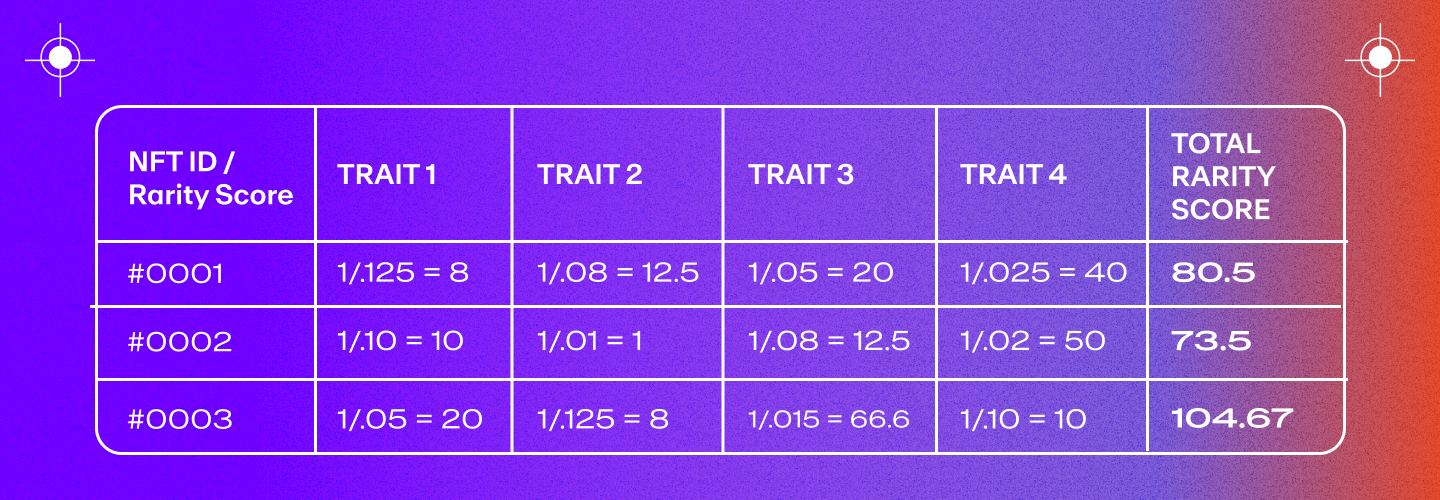
As you can see, the rarity score method gives NFT #0003 the highest rarity score, making it the rarest of all three NFTs.
While NFT communities and ranking websites still use all three methods, many NFT rarity platforms today consider the rarity score method the industry standard for calculating NFT rarity.
What other factors determine an NFT’s value?
Besides the rarity of an NFT, there are several other factors that may also contribute to its value.
These additional factors are:
- Supply
- Demand
- Provenance
- Benefits
1. Supply
The number of NFTs minted in an NFT collection determines the maximum supply of the collection. For instance, CryptoPunks have 10,000 NFTs in its collection.
At any point in time, however, there are a limited number of NFTs available for sale on various NFT marketplaces like OpenSea or Rarible. When fewer NFTs are up for sale, it usually means their owners do not want to sell them and corresponds to a lower supply in the marketplace.
2. Demand
Many NFTs have inherently more demand. For instance, an NFT minted over Ethereum is likely to have more demand than an NFT minted on a lesser-known blockchain.
The utility of an NFT may also have an influence on demand. For example, unique art NFTs or gaming and metaverse-based NFTs, such as virtual land NFTs, are currently more in demand than NFTs with no particular utility attached to them.
3. Provenance
Some NFTs represent original artworks in digital form, such as Beeple’s ‘Everydays’, while some are limited edition NFTs released to commemorate a significant event.
Jack Dorsey’s first tweet sold as an NFT, a rare digital asset, is a good example of the latter.
Having historical significance or being created by a renowned artist sometimes contributes to the value of an NFT.
4. Exclusive benefits
NFTs can be programmed to offer their owners access to several benefits. For instance, the VeeFriends NFT collection owners have exclusive access to Gary Vaynerchuk’s community.
Depending on the kind of benefits an NFT offers, its value can be higher or lower.
NFT Rarity tools
Even though you’re now familiar with the four common NFT rarity score calculation methods, you never need to calculate an NFT’s rarity manually. There are NFT rarity tools you can use to instantly check the rarity scores of NFTs you’re interested in.
NFT traders and investors use NFT rarity tools to find the rarity of a specific NFT before making a purchase. Let’s check out some currently available NFT rarity tools:
Rarity Sniper

Rarity Sniper helps users check NFT rarity of over 2,000 NFT collections, including CryptoPunks, BAYC, MAYC, Meebits, and many others across multiple blockchains. It measures the rarity of an NFT collection based on key statistics like the total supply, owners, floor price, and trading volume.
The platform also ranks the NFTs according to their rarity score within a collection. It is one of the most used rarity tools, with a community of over 435,000 Twitter followers and 33,000 Discord members.
Rarity Sniper is available as a browser-based platform.
Rarity.Tools
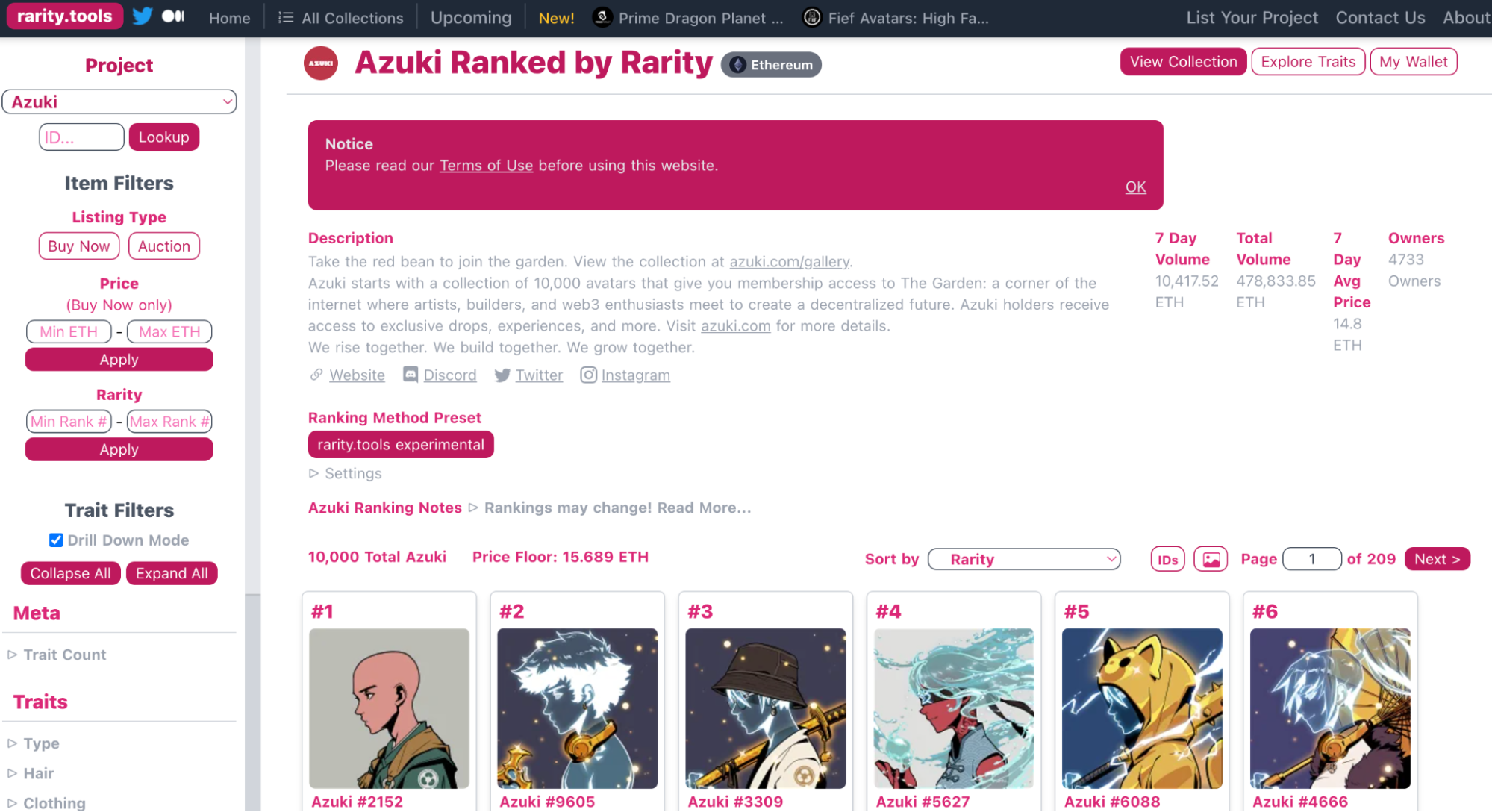
Rarity.Tools allows users to calculate rarity scores of art and collectible NFTs based on all four calculation methods discussed above. The platform also allows users to search for NFTs by using filters for specific traits, giving it an edge over many other similar tools.
It lists many top NFT collections, including DeGods, Otherdeed, Okay Bears, and more. Users can use filters like total sales volume, average price, owner count, and top collections to search for the best NFTs.
Rarity.Tools is available as a browser-based platform.
Trait Sniper
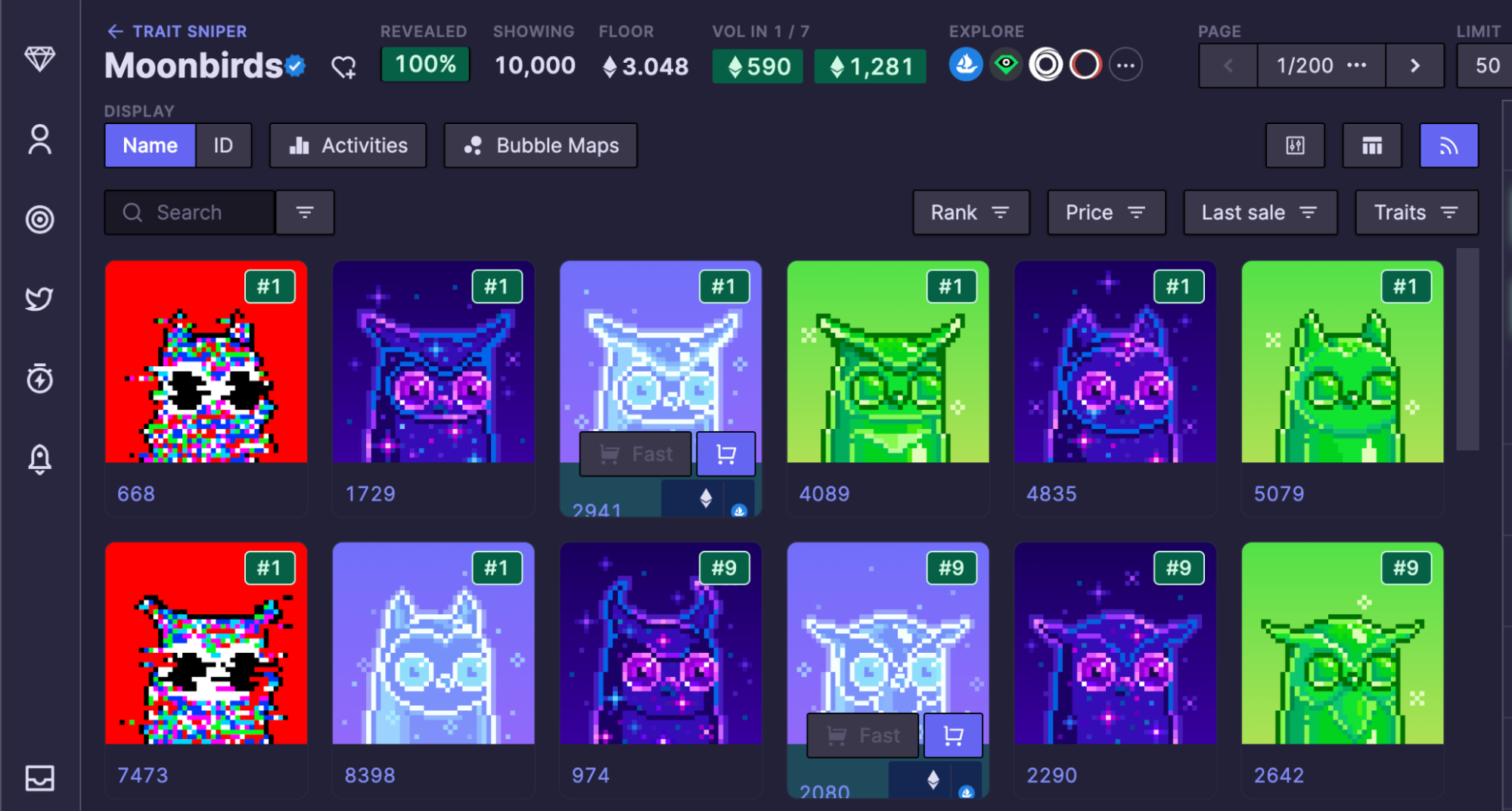
Trait Sniper is among the most comprehensive rarity tools currently available and is suitable for users searching for new NFT projects. The rarity NFT tool sends bot alerts on the launch of every new NFT collection, which gets ranked within 30 seconds of the reveal.
Users of Trait Sniper can apply advanced filters to search Ethereum and Bitcoin Ordinals NFTs by trait, rank, and price. The website UI is intuitive and user-friendly and it has a freemium model.
Premium users get a built-in MetaMask and OpenSea integration and a customizable gas setting to buy NFTs instantly. Users can also access real-time event feeds to keep themselves updated on the go and make multiple bids by switching on bid mode.
Trait Sniper is available as a browser extension and an app.
Icy.tools
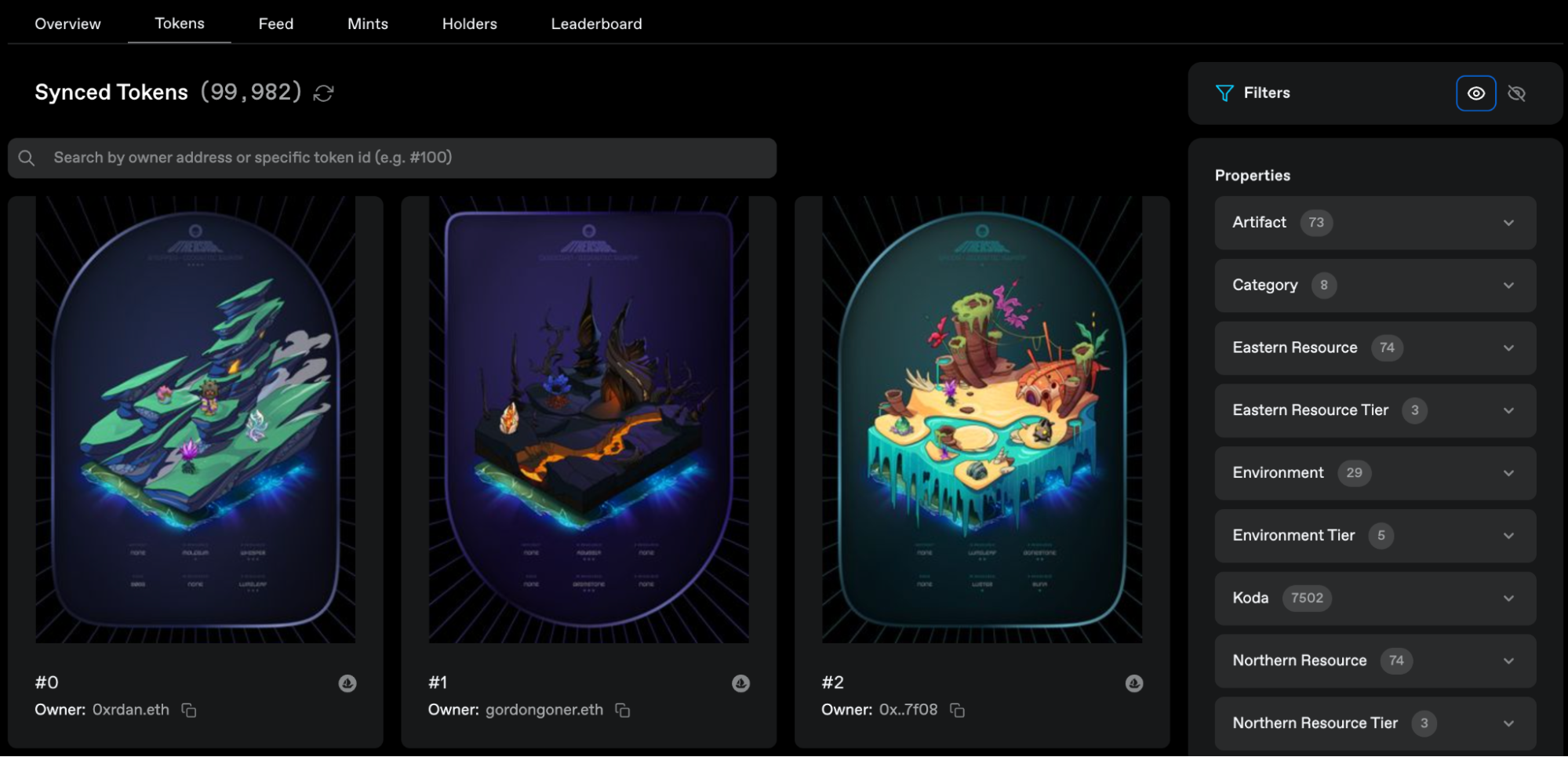
Icy.tools is an NFT analytics platform with multiple features and a simple UI suitable for both beginners and experts. The platform has a Trending NFT section for the hottest NFT collections alongside a Leaderboard showcasing information such as the floor price, volume, and average price.
Through its premium membership, users can utilize analytics tools like real-time charts, firehose feeds, and favorites.
Icy.tools is available as a browser-based platform.
Nansen
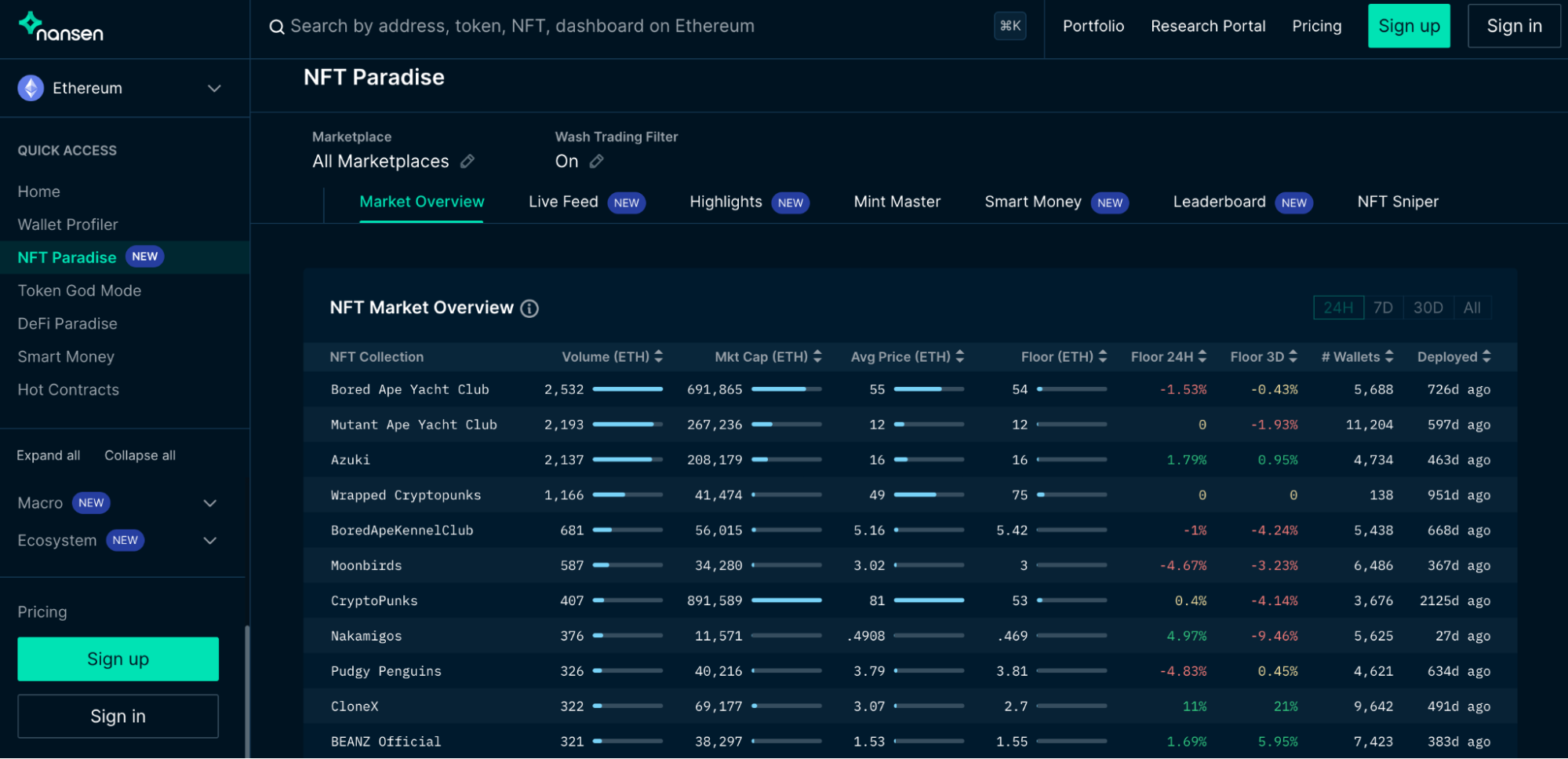
Nansen is an NFT analytics platform. Some of the most experienced NFT users prefer it over any other. Finding the rarity score of NFTs is just one of Nansen’s many features.
Users of Nansen get access to the latest trends, in-depth NFT research, premium investment and wallet analysis tools, leaderboards, and much more.
While the free version of Nansen is good for beginners, the paid version is where experienced NFT traders can get the most value.
Nansen is only available as a browser-based platform.
OpenSea
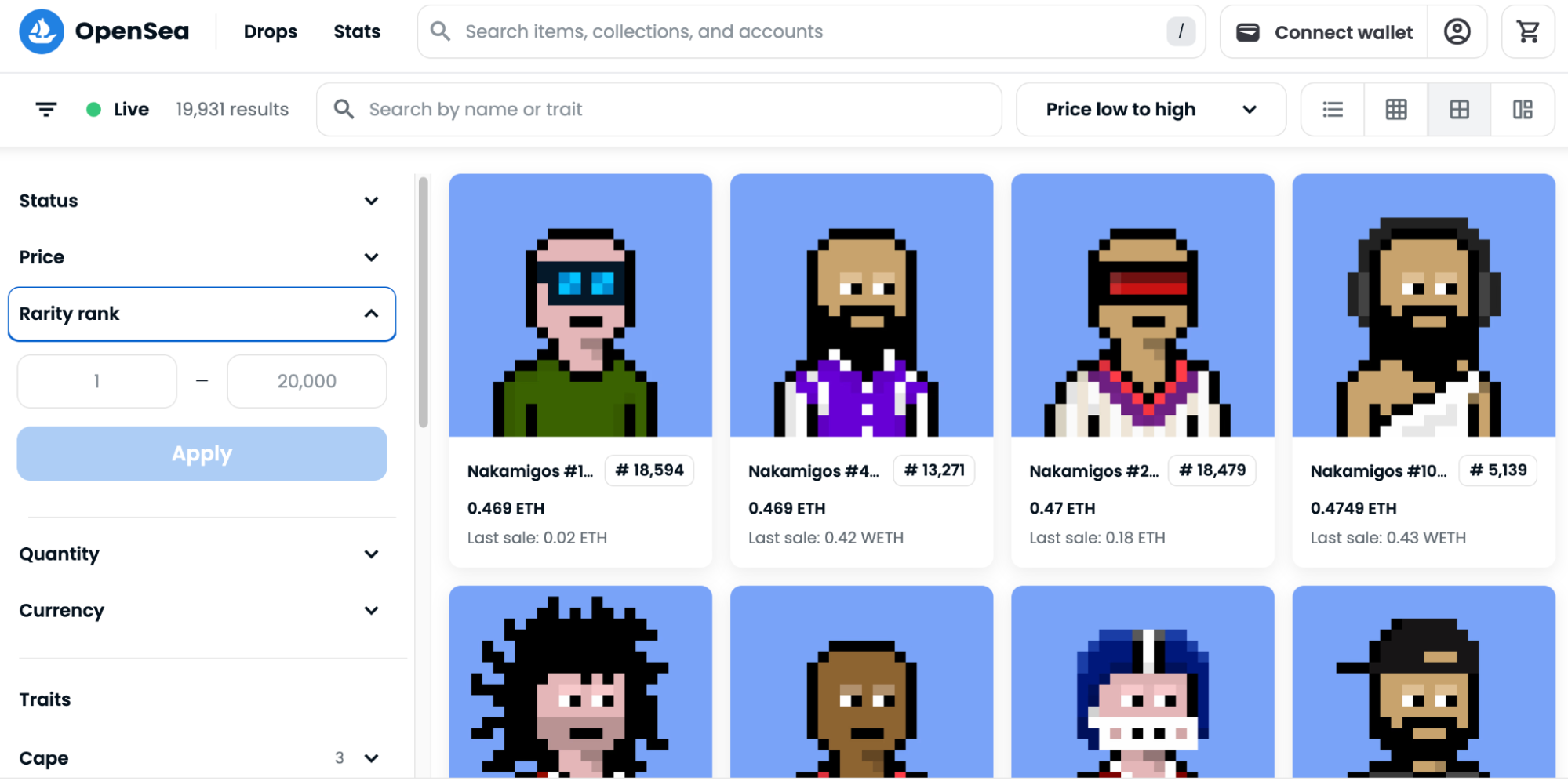
OpenSea, one of the world's largest multi-chain NFT marketplace, allows users to filter and view NFTs by their character traits and rarity. To define an NFT’s ranking, OpenSea considers the volume and floor price among other factors.
Users can filter and view top NFTs by character traits and rarity and make informed decisions. However, OpenSea doesn’t provide rarity ranks or the overall rarity score of any NFT.
OpenSea is available as a browser-based platform and an app.
Etherscan
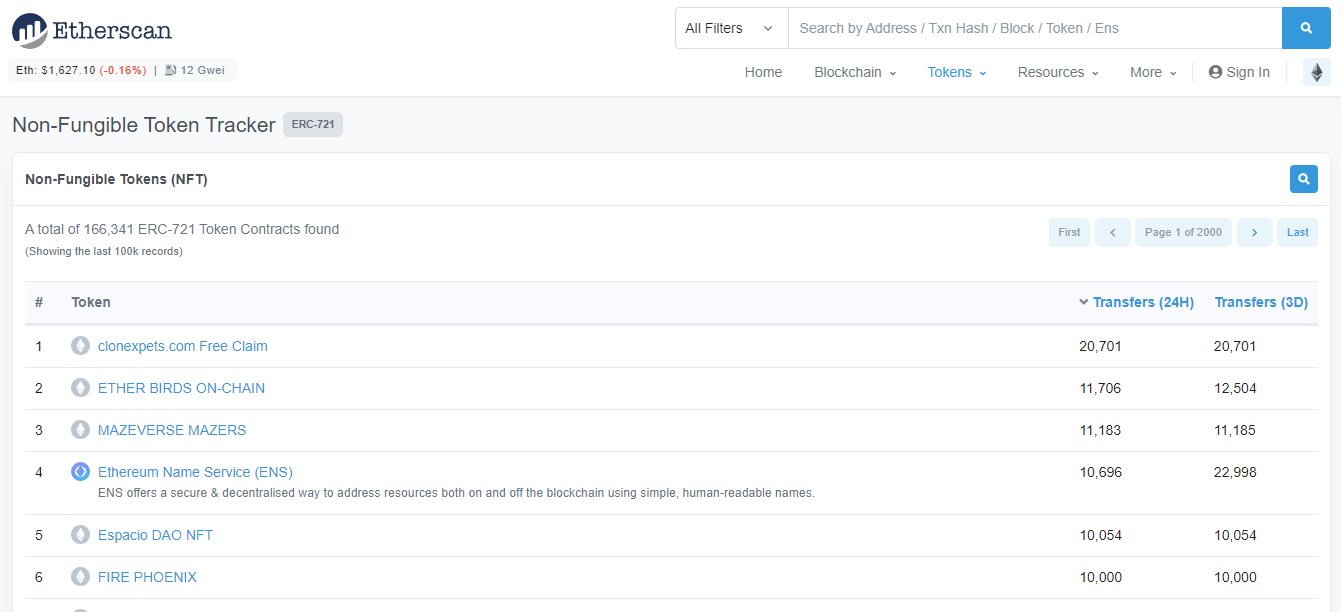
Etherscan is a block explorer and analytics platform for the Ethereum network. Its NFT tracker gives a real-time record of all the NFTs minted on the Ethereum network.
Traders can use Etherscan to gather information about the minting, distribution, and prices of NFTs. They can also get NFT stats related to their total supply, number of holders, all NFT transactions, and profile summaries.
Etherscan is only available as a browser-based platform. To learn more about Etherscan, see our article What is Etherscan and how do you use it?
DappRadar
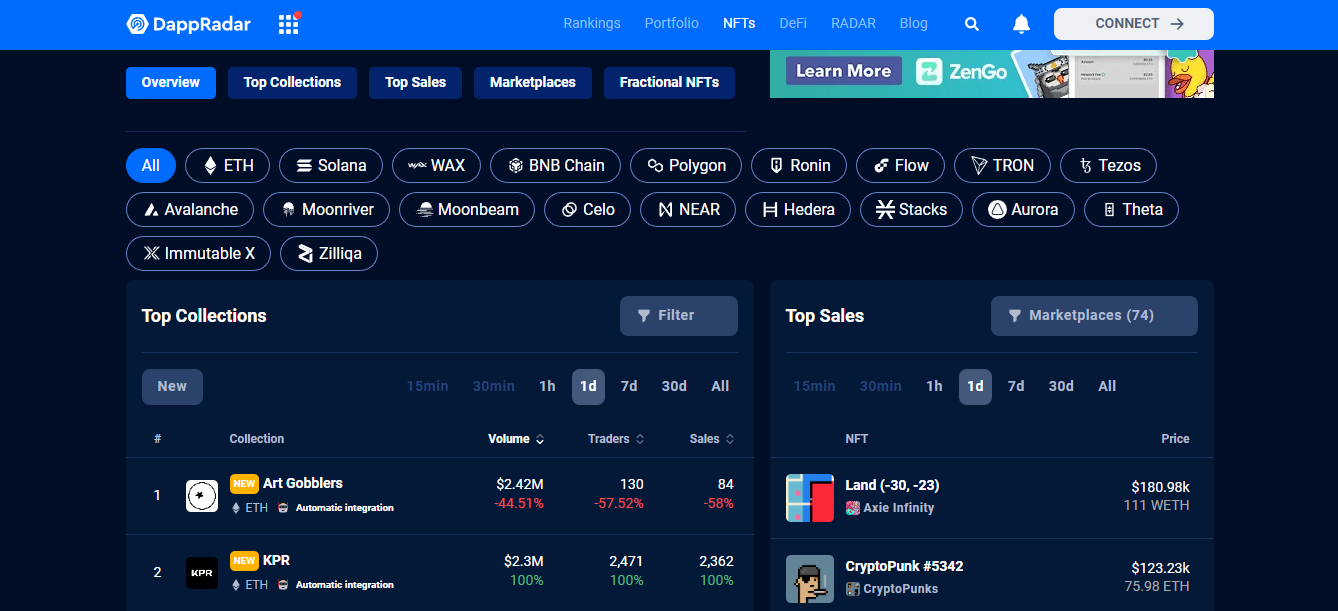
DappRadar monitors the performance of NFT collections on over 20 blockchains, including Ethereum (ETH), Solana (SOL), BNB Chain (BNB), Polygon (MATIC), and Flow (FLOW).
Users can filter their NFT search based on the time period, floor price, average price, market cap, volume, traders, and sales. The platform has different sections for top NFT collections, top sales, marketplaces, and fractional NFTs.
DappRadar tracks the performance of NFTs using smart contracts, and its rarity calculation tool is among the most popular on the market. The platform also offers an NFT portfolio tracker to track Ethereum-based crypto tokens, including NFTs.
DappRadar is available as a browser-based platform and an app.
RankNFT
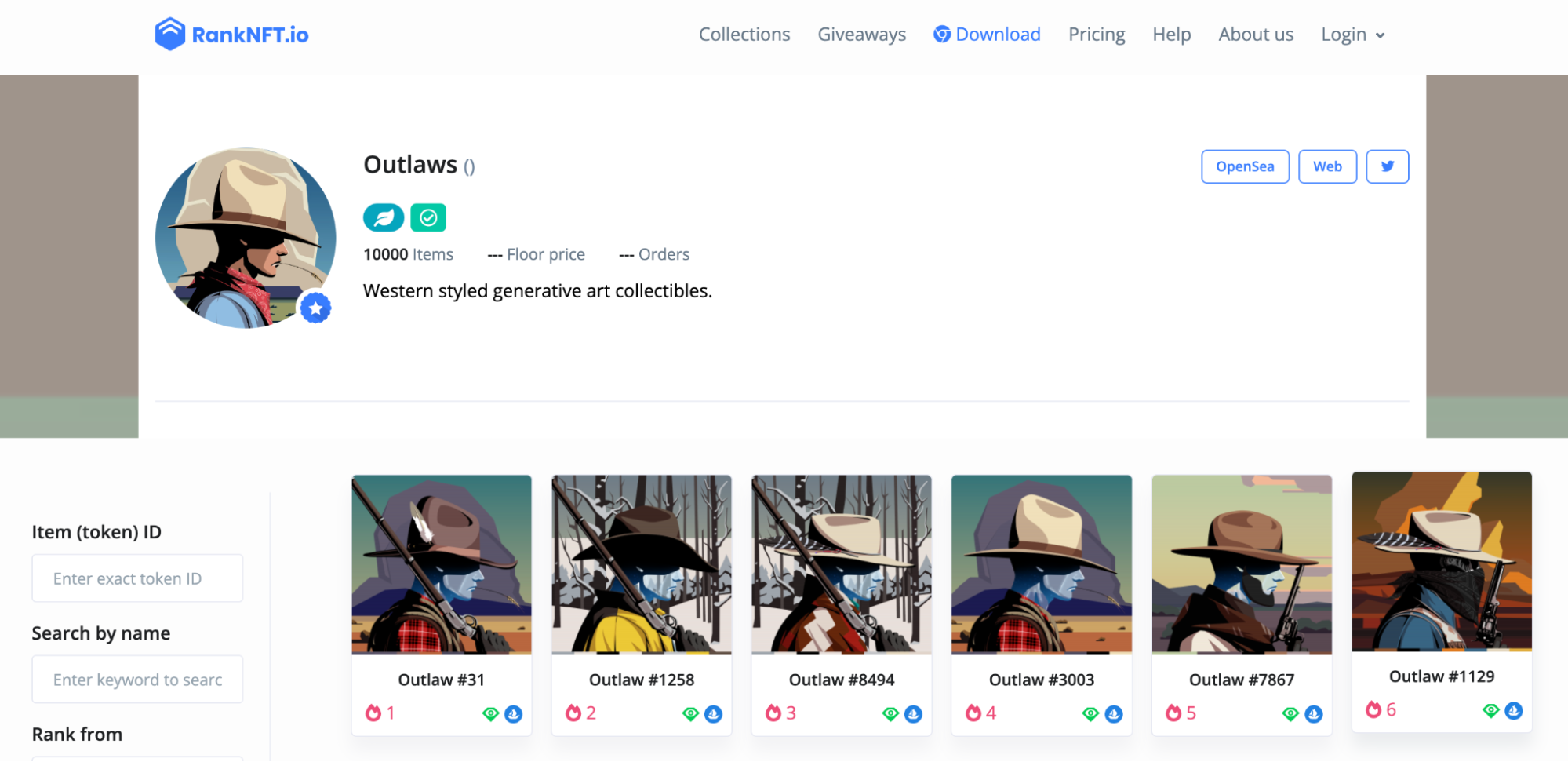
RankNFT is a useful tool for gathering NFT rarity scores and rankings for various NFT collections. The platform is fairly new and plans to introduce floor price dynamics, pricing history, popular collections, and other features.
RankNFT is available as a browser extension and a website.
NFT Stats
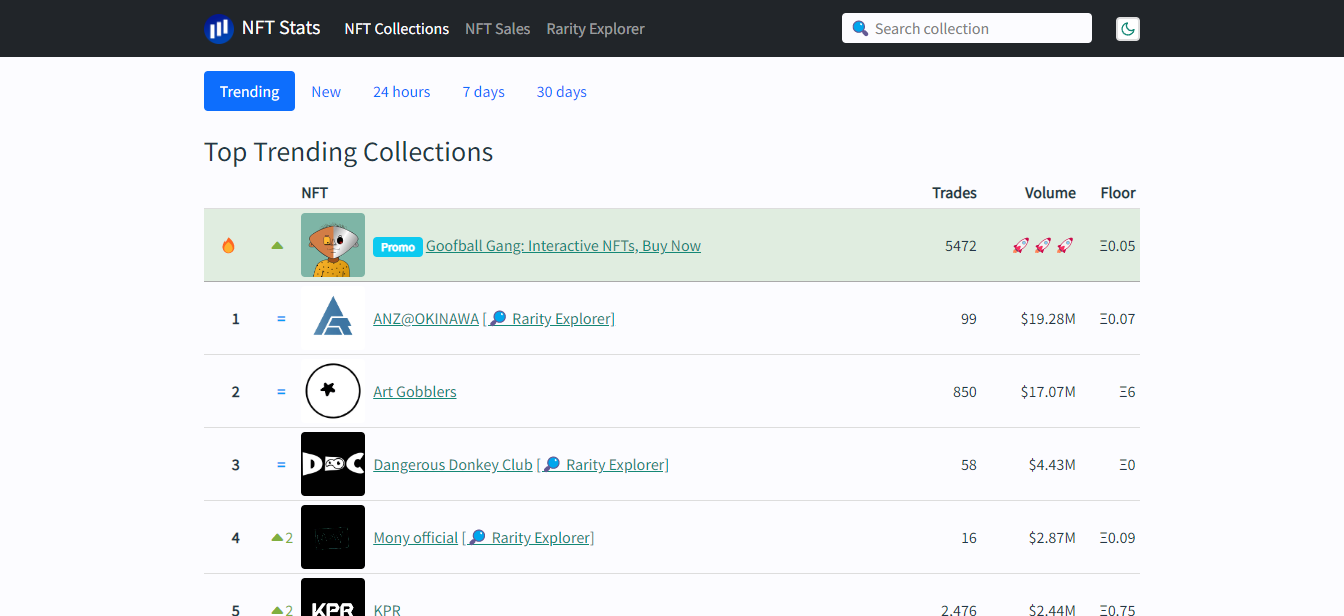
NFT Stats covers trending NFT collections, rarity rankings of NFTs, and their sales volume. It shows basic information about each NFT, including the trades, volume, floor price, and community strength.
Users can view the top trending collections with the strongest increase in sales over a set period of time. The Rarity Explorer on NFT Stats allows users to filter NFT collections and find rare and new NFTs.
NFT Stats is only available as a browser-based platform.
HowRare
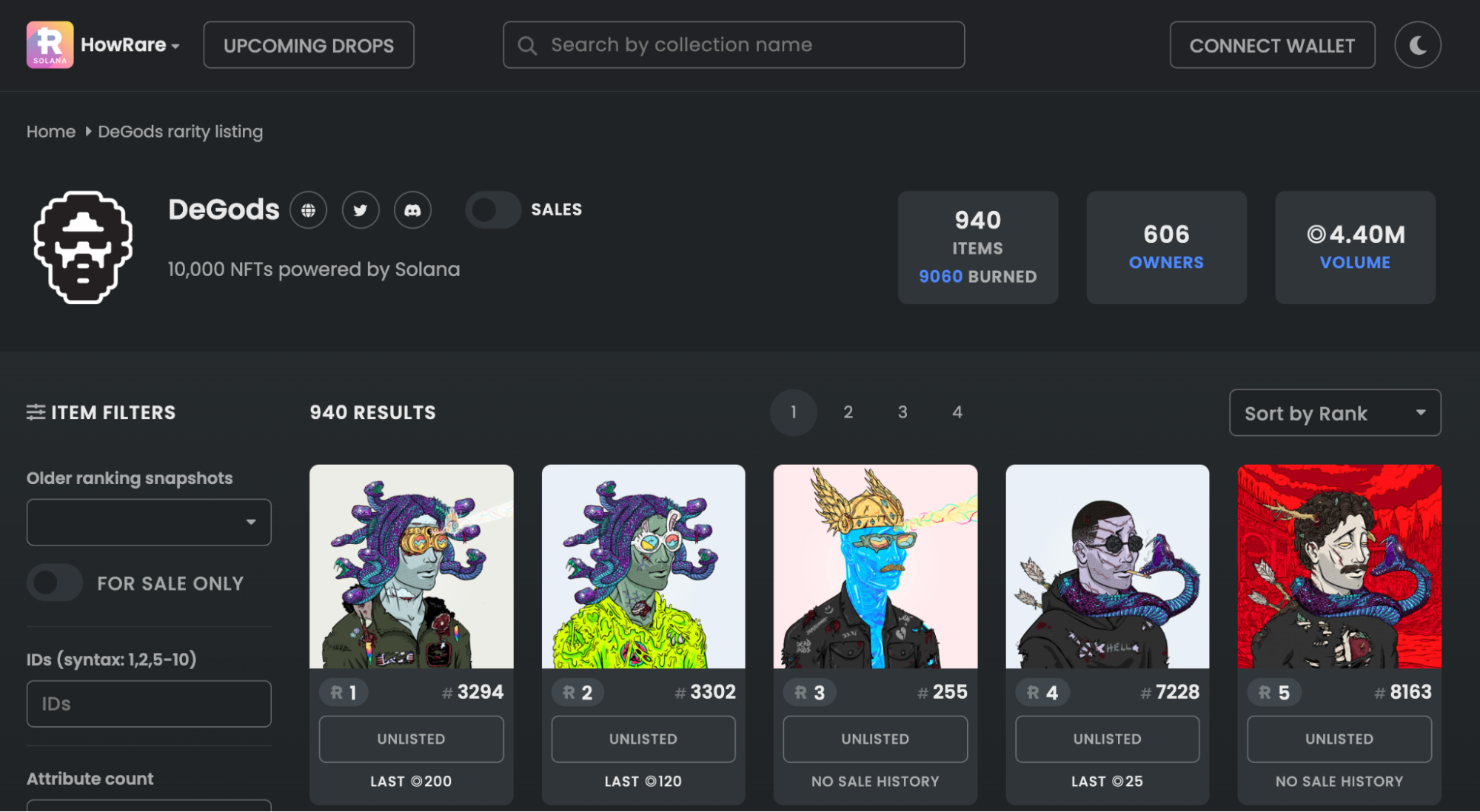
HowRare is an NFT rarity tool that helps users find and compare the rarity scores of the NFTs on the Solana network.
Users can connect their wallets, explore upcoming NFT drops, and browse NFT collections based on various parameters, including floor price, total supply, and the number of holders.
Each NFT has a dedicated page where users can find details such as rarity score, rank, and the rarities of individual traits of the NFTs.
HowRare is only available as a browser-based platform.
How to choose the best NFT rarity tool
Each NFT community has a different preference for ranking NFTs, and each tool uses different parameters to determine the rarity score.
You should only choose an NFT rarity tool based on your own research about the NFT you want to buy. You can also check the official websites, Twitter profiles, and Discord servers of different NFT rarity tools to better understand if a tool is fit for you or not.
While rarity is important, it is not the sole factor that impacts the worth of an NFT. It is therefore best to use NFT rarity scores in combination with other NFT quantitative and qualitative parameters to make more informed decisions.
Begin your NFT journey with MoonPay
MoonPay makes it easy to buy NFTs.
Simply go to a MoonPay-supported marketplace like OpenSea, select the NFT you want, and use your credit card to make a purchase. It’s really that simple.
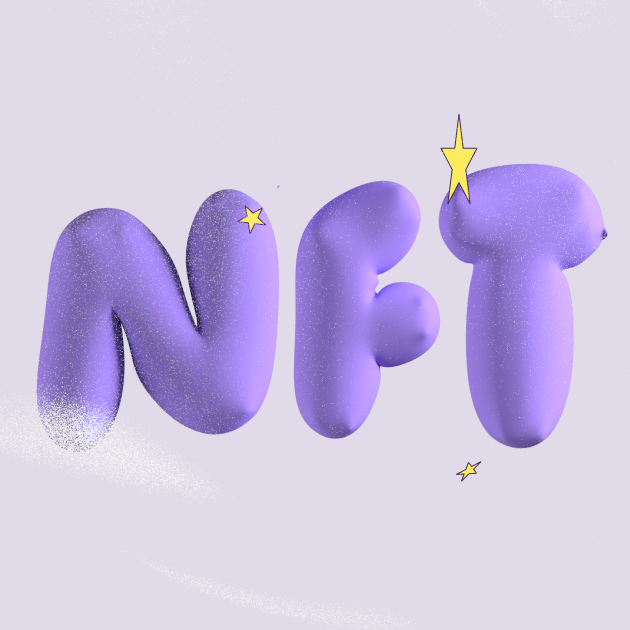
.png?w=3840&q=90)


.png?w=3840&q=90)
.png?w=3840&q=90)
